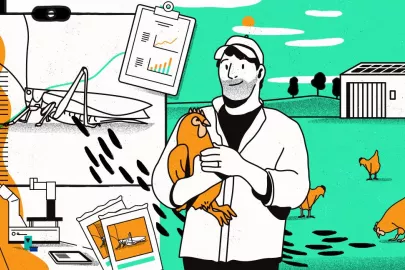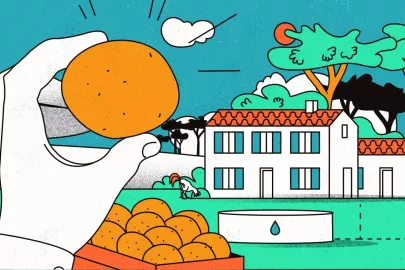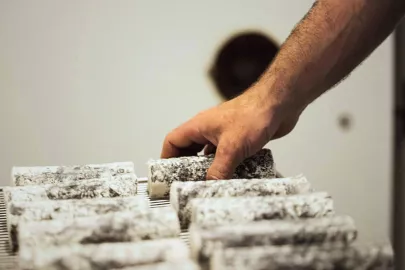The number of professional and amateur beekeepers is on the rise in France...but not where you might think! Apiarists are setting up hives in towns and cities. Their precious pollinators are now foraging in flowers on pavements and in surrounding fields, allowing them to produce honey locally and holistically.

I arrive to find Jamie Lozoff bustling between the hives. Her accent has a soft hum. Jamie grew up in Philadelphia. It was a school field trip to a local apiary that changed everything for the young woman. On returning, she set up a hive in her high school, and started a beekeeping club. Then came the movie, The Fabulous Destiny of Amélie Poulain. Jamie fell in love with France and following her graduation, ended up at the home of a couple of beekeepers in the Cévennes region. The young American has since moved to Marseille. She now has some thirty hives, divided between a shared plot and her own garden to the south-east of the city. Whilst apiculture never completely disappeared from towns and cities, it has returned in a big way since the mid-2000s, including in most major urban centers. The 2019 census by the French Ministry of Agriculture and Food recorded 2,631 hives in Paris, managed by 284 beekeepers. This compares to just 200-300 in 2010*.
And contrary to popular belief, the productivity and quality of France’s urban hives compare very favorably with their rural counterparts. Honey produced in the French capital comes from a wide variety of plants, including apple trees, clover, lime, and Virginia creeper…
But what is behind this surge in popularity? In 2017, the French daily newspaper Le Monde published an article reporting that bees were on the verge of extinction in Europe. The phenomenon was mainly due to the massive use of chemical pesticides and increasing urbanization, which has gradually eaten into bees’ natural habitats. However, humans rely on pollination for approximately 50% of our food. It enables us to produce fruit, cereals, and other crops. So, it is hardly surprising that a handful of enlightened city-dwellers wanted to set up their own hives, installing them on the building roofs and in public gardens. Especially when you consider that cities can also be favorable to the wellbeing of bee populations, as the use of pesticides there is far lower than in the countryside. It was with this in mind that in 2001, the City of Paris adopted a policy to reduce the use of pesticides in its green spaces, eliminating them completely in all its parks, gardens and cemeteries by 2007. This inspired the country to think even bigger. Since January 1st, 2017, and the coming into force of the Labbé Law (named after the senator who introduced it), local authorities, public bodies and the French state are no longer permitted to use or sanction the use of pesticides to maintain green spaces, forests or roadsides which are accessible or open to the public, in public or private areas. This measure may be specific to France, but it reflects a global concern. New York, Toronto and London are also buzzing with the presence of millions of pollinators. Which all goes to show that bees and city-dwellers can live together!
*According to a study by the Ecole Normale Supérieure (Paris).
www.environnement.ens.fr/IMG/pdf/4-apiculture_urbaine___redaction-pre30juin.pdf
Contributor

Editor













